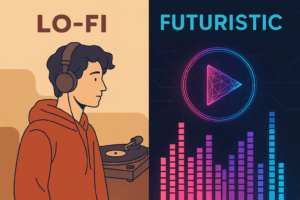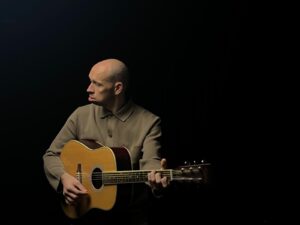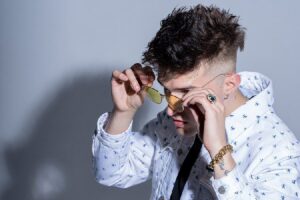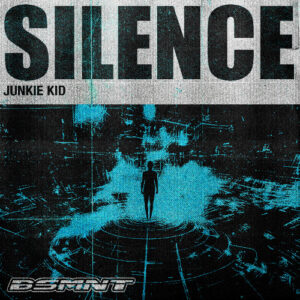Music is no longer just about sound. In today’s digital world, visuals play just as important a role in shaping how we connect with songs and artists. Whether it’s the hazy, nostalgic vibes of lo-fi or the sharp, futuristic energy of neon-soaked imagery, visual aesthetics keep listeners hooked long after the first play. For artists, producers, and content creators, the question isn’t whether visuals matter, it’s which aesthetic works best for building connection and loyalty.
Why Visuals Matter in Music
Streaming platforms and social media have made music as much a visual medium as an auditory one. Album art, lyric videos, live visuals, and motion graphics all shape the story of a song. Even the platforms themselves encourage this shift. Consider YouTube: songs with engaging visuals often see higher replay rates than those uploaded with just a static image.
According to HubSpot, 72% of customers say they would rather learn about a product or brand through video than text. While this stat is focused on marketing, it highlights a universal truth that visual storytelling grabs attention faster than words alone. For musicians, this means visuals aren’t optional. They’re essential.
The Allure of Lo-Fi Aesthetics
Lo-fi visuals have exploded in popularity, especially among younger audiences who gravitate toward “study beats” playlists or chill-out sessions. These visuals are characterized by grainy textures, retro filters, and muted color palettes that evoke a sense of calm and nostalgia.
The appeal lies in how lo-fi feels personal and relatable. It mirrors the imperfections of everyday life and creates a cozy, intimate listening experience. For independent artists, lo-fi visuals also carry a DIY charm that resonates with fans tired of polished, corporate media.
The Pull of Futuristic Visuals
On the other end of the spectrum, futuristic aesthetics deliver high energy and bold design. Think neon lights, glitch effects, holographic textures, and space-inspired imagery. These visuals work perfectly with electronic, hip-hop, or experimental genres that thrive on intensity and innovation.
Futuristic visuals often leave a strong impression because they feel immersive and transportive. They invite listeners into a whole new world, amplifying the energy of the music and making it memorable.
Visual Tools That Help Artists Shine
The good news for creators is that you don’t need a huge budget to experiment with visuals. Many tools make it possible to add professional-quality graphics without advanced design skills. Some popular options include:
- Canva for simple graphics and social content
- Adobe After Effects for complex motion visuals
- Videobolt’s YouTube music visualizer for ready-made, customizable templates synced to your tracks
- Blender for those who want to explore 3D worlds
- Final Cut Pro or Premiere Rush for straightforward video editing
By mixing these tools, artists can create visuals that feel intentional and elevate their brand, no matter their aesthetic.
Matching Aesthetic to Audience
Choosing between lo-fi or futuristic visuals isn’t just about preference but about knowing your audience. Fans of indie or acoustic music may connect more with lo-fi’s raw, authentic vibe. Fans of EDM or trap are more likely to gravitate toward futuristic, high-energy visuals that mirror the intensity of the music.
Some artists even experiment with blending both aesthetics. For example, starting a video with lo-fi textures and gradually building into bold, futuristic visuals mirrors the energy arc of a song, keeping viewers visually engaged from start to finish.
Beyond Music: Visuals as Branding
Visual aesthetics don’t just serve the song, they shape an artist’s brand. A consistent visual style across social media, videos, and live performances creates a recognizable identity. Fans often associate the “look” of an artist as strongly as they do the sound.
That’s why investing time in visuals pays off. Whether it’s the warm fuzz of lo-fi or the sleek edge of futuristic designs, these choices tell your audience who you are before they even hit play.
Final Thoughts
At the end of the day, both lo-fi and futuristic aesthetics have the power to hook listeners. The right choice depends on your music, your message, and your audience. Visuals are no longer background but they’re part of the experience.







